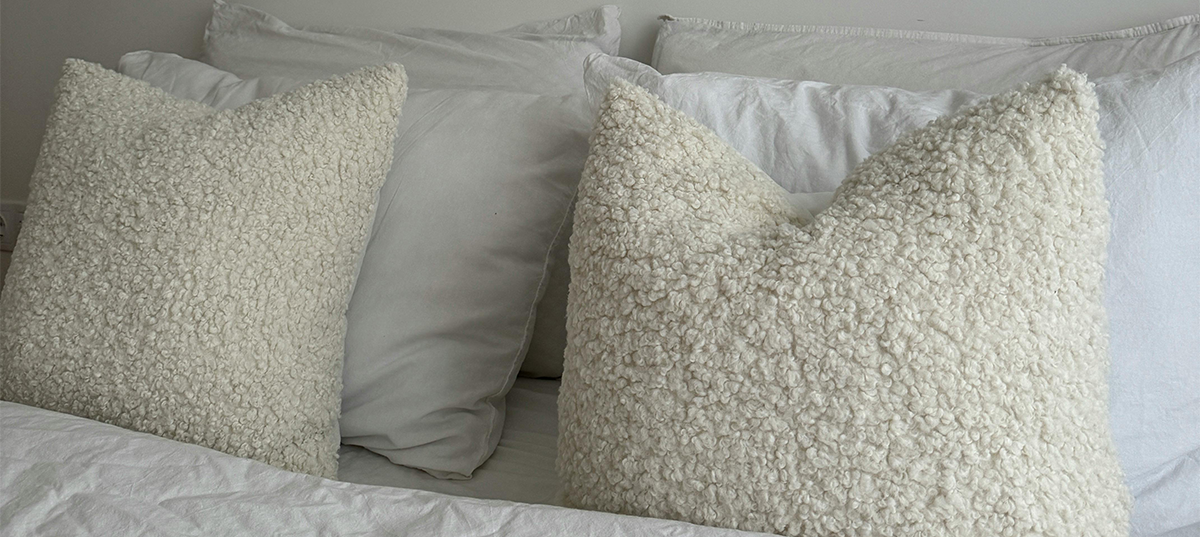Knowing When to Replace Your Pillows

June 2024
There’s nothing quite like the feeling of sinking into a cozy bed after a long day. And a big part of that comfort comes from your pillows. But even the fluffiest, comfiest pillows have a shelf life. Knowing when to replace your pillows can make a world of difference for your sleep quality and overall health. Let’s dive into the signs that it’s time to say goodbye to your old pillows and what to look for in new ones.
The Importance of Good Pillows
Before we get into the nitty-gritty of when to replace your pillows, let’s talk about why they’re so important. A good pillow supports your head, neck, and spine, helping you maintain proper alignment while you sleep. This can prevent aches and pains, reduce snoring, and improve your sleep quality. Plus, pillows can harbor allergens like dust mites, which isn’t great for anyone, especially if you have allergies.
Signs It’s Time to Replace Your Pillow
Loss of Shape and Support
One of the most obvious signs that you need a new pillow is when it loses its shape and support. If your pillow is flat, lumpy, or won’t fluff up no matter how much you try, it’s probably time for a replacement. A pillow that can’t provide proper support can lead to neck and back pain, making it harder to get a good night’s sleep.
Waking Up with Aches and Pains
Do you wake up with a stiff neck or sore shoulders? Your pillow might be the culprit. Over time, pillows lose their ability to support your head and neck properly, leading to discomfort and pain. If you’re waking up with aches and pains regularly, it’s a clear sign that your pillow isn’t doing its job anymore.
Allergies Acting Up
If you find your allergies flaring up, especially at night, your pillow could be to blame. Pillows can accumulate dust mites, mold, and other allergens over time. If you’re sneezing, coughing, or experiencing itchy eyes more often, it might be time to switch out your pillow for a fresh one.
Discoloration and Odors
Take a good look at your pillow. If it’s yellowing or has a musty smell, it’s definitely time for a replacement. Sweat, oils from your skin, and drool can all contribute to pillow discoloration and odors. While washing your pillow can help, there comes a point where a good cleaning just won’t cut it anymore.
Age of the Pillow
Pillows don’t last forever. On average, you should replace your pillow every 1 to 2 years. This can vary depending on the type of pillow and how well you take care of it, but it’s a good general rule to follow. If you can’t remember the last time you bought a new pillow, it’s probably time to invest in a new one.
Types of Pillows and Their Lifespan
Different types of pillows have different lifespans. Here’s a quick guide to help you know when to replace them:
Memory Foam Pillows
These can last up to 2-3 years. They’re durable and maintain their shape well, but they do break down over time.
Down and Feather Pillows
These typically last about 1-2 years. They’re comfortable and moldable, but they lose their fluffiness and support relatively quickly.
Synthetic Fill Pillows
These should be replaced every 6 months to 2 years. They’re usually less expensive but don’t hold up as long as natural materials.
Latex Pillows
These can last up to 3-4 years. They’re supportive and durable, making them a longer-lasting option.
Tips for Maintaining Your Pillows
To extend the life of your pillows, here are a few maintenance tips:
- Use Pillow Protectors: These can help protect against sweat, oils, and allergens, keeping your pillows cleaner for longer.
- Wash Regularly: Follow the manufacturer’s instructions for washing your pillows. Regular cleaning can help reduce allergens and keep your pillows fresh.
- Fluff Daily: Fluffing your pillows daily can help maintain their shape and support.
- Air Them Out: Every few months, air out your pillows outside to help get rid of any lingering odors and freshen them up.
Whether it’s our apartments or townhomes, we designed VIDA to have roomy, comfortable bedrooms where you can get the rest you need. You can check out all our floorplans and 3D tours here.
